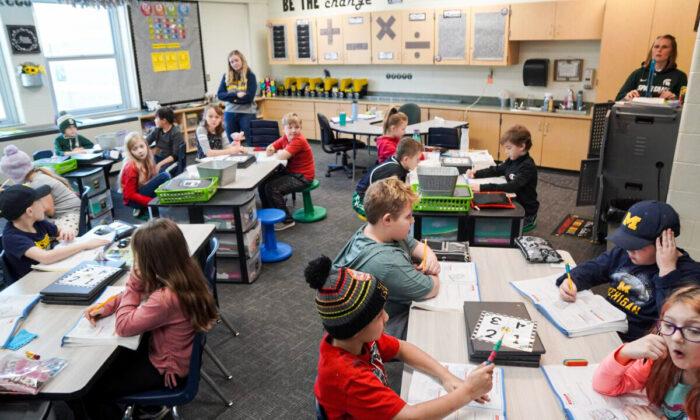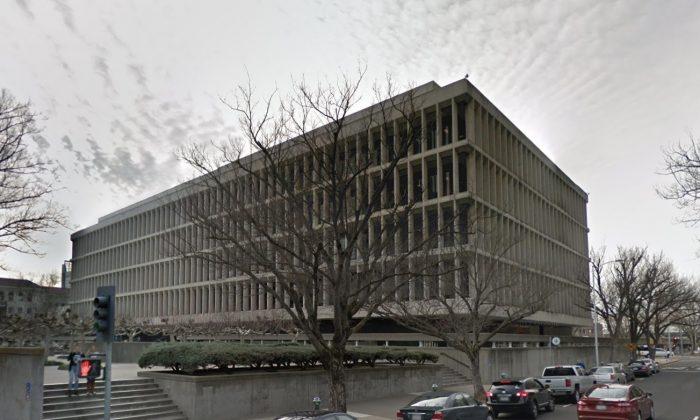Michigan’s K-12 education system has a “statewide pandemic recovery problem,” and more money is the answer, a nonprofit research group says.
ETM stated that “Michigan is woefully underfunding public schools.”
From 1995–2015, Michigan was the “worst in the nation for education revenue growth,” the report said.
Ranking seventh among the 50 states, Michigan currently spends $9,608 per pupil. New Jersey leads the nation, spending $13,946 per student, according to the report.
The learning loss is reflected by the continued poor academic performance of Michigan’s K–12 students.
ETM researchers put Michigan in the bottom five of the 50 states for post-pandemic reading recovery, as measured from 2019 to the present.
Students Lag in Reading and Math
The report revealed that Michigan’s third- through eighth-graders are 40 percent of a grade level behind in math and 75 percent of a grade level behind in reading from where they were in 2019.In the 2023–2024 school year, ETM found that 60.4 percent of all Michigan third-graders were nonproficient in reading.
Nearly 68 percent of seventh-grade students were found to be nonproficient in math during the same year.
In 2024, Michigan’s fourth-graders were 44th in reading, and its eighth-graders ranked 31st in math among the 50 states.
According to the report, one out of every eight Michigan students entering college is required to take remedial courses to make up for deficiencies in their high school education.
The number is double for black students.

The ETM report also warned of the potential impact of the Trump administration’s quest to do away with the U.S. Department of Education (DOE).
The report found that federal funding of Michigan schools amounted to $3.7 billion and accounted for 13.8 percent of their budgets in 2023.
According to the report, federal dollars are used by Michigan school districts to pay for things that the state does not fully fund, such as programs for disabled students, English learners, and even first-time applicants for college loans.
Racial and Income Disparities
In the 2023–2024 school year, 83.4 percent of black third-graders in Michigan tested nonproficient in reading. The rate was 53.3 percent for white third-graders.During the same year, 90.6 percent of black seventh-graders tested nonproficient in math, while the nonproficiency rate among white seventh-graders was 61.1 percent, according to the report.
According to data from the 2023-2024 Michigan Student Test of Educational Progress cited in the ETM report, 57.1 percent of third-graders with higher income backgrounds tested proficient in reading, while 26.9 percent of third-graders from low-income backgrounds tested proficient in reading.
The Most Needy
According to the ETM report, nine states provide their highest poverty-rate school districts with between 10 percent and 40 percent more state funding than their low poverty-rate school districts. Michigan is not one of them.“For many years, Michigan’s school funding formula mandated an additional 11.5 percent in what is called ‘at-risk’ funding on top of the foundation allowance—or base student spending —for students from low-income backgrounds. Yet that amount was often underfunded, with districts receiving on average only 9 percent per student more in additional ‘at risk’ funding,” the report said.
ETM said its research suggests that students from low-income backgrounds should receive between “100 and 200 percent more funding than their peers from more advantaged backgrounds to close gaps in opportunity and outcomes.”
Michael Rice, the state superintendent of schools, told The Epoch Times that despite historic investments in education in recent years, “Our schools remain underfunded by billions of dollars.”
Beyond an increase in funding, Rice said other reforms are needed to improve student achievement, particularly in low-income schools, such as smaller class sizes in K-3 high-poverty classrooms and better teacher training in the science of reading.
A View From the Ground
Superintendent Doug Muxlow of Carsonville-Port Sanilac Community Schools, a district in rural Michigan serving just over 400 K-12 students, told The Epoch Times that the financial impact of declining enrollment is probably the biggest concern of most Michigan school systems.Muxlow said that the reduction of revenue resulting from a loss of students, when coupled with the annual rise in expenses due to inflation, can result in a district breaking even or sometimes losing ground, despite increases in the state’s contribution per student.
“Our state’s small town and rural school districts are typically low-income. They are really struggling with the financial challenges stemming from enrollment decline.
“Michigan does have a small program to help deal with this by giving additional dollars to school districts losing enrollment, but it needs to be greatly expanded,” said Muxlow.
Muxlow said learning loss from the COVID-19 lockdowns is not a major factor in his district.
“Socio-economic factors are huge when it comes to disparities in academic achievement. For example, there are some students in our district whose families still do not have internet access at home,” he said.







